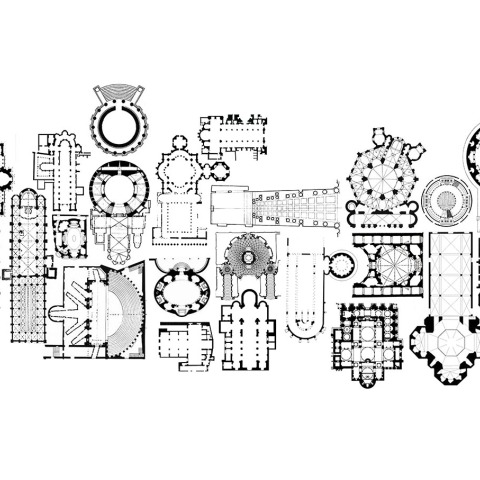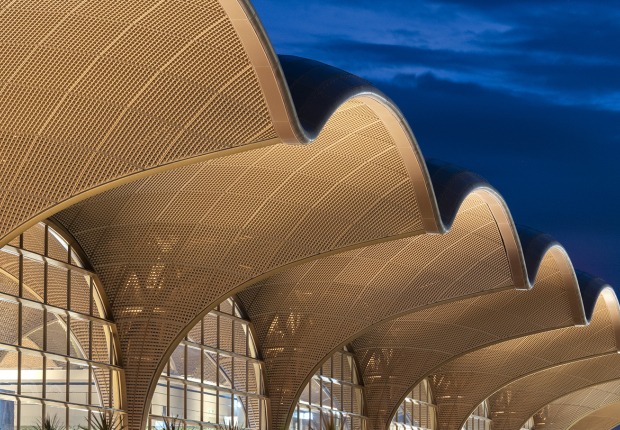The itinerary is divided in seven sections that show the national identity traits, the Italian language, the modern democratic system, the defence of the peace and the homeland, the Italians’ rights and duties, the work, the individuals and the communities that constitute the country. The new museum project at the Vittoriano is accompanied by a free new digital app, also introduced during the inauguration, aimed to promote the museum complex and to disseminate the content of its exhibitions and activities.
Description of project by Benedetta Tagliabue
One day, the figures in the friezes of the Vittoriano Museum appeared in my dreams. With their colours, their shapes, their monumental heights… Somehow, I understood that it was an Italy’s desire; Italy, that was trying to find and to represent its spirit.
That spirit seemed clear to me then, even beyond words… It was a feeling, a nature, a try… It was beautiful and strong and I knew it. I smiled while sleeping and my sister, who was there, asked me “are you happy?”, and I answered “yes”.
Later than that I was invited to design, together with Edith Gabrielli and a team of experts, artists and creative collaborators, the first fragment of the future “Museum of the Italian Identity” at the Vittoriano.
It seemed to me to be ready, even if I did not remember anything specific about that dream… Just a spirit.
But in my architectural office, surrounded by wonderful collaborators, spirits turn into drawings: floor plans, elevations, collages… We are habituated to make the feelings come true, to build from the wishes, the desires and needs… We always work with a spirit, setting and shaping it.
Thus, without any fear, we started combining materials, cutting them, repositioning them. Italian identity… Representations of the Roman forum remains appeared on our tables, those which still exist under the foundations of the Vittoriano. The old Rome, a powerful base of the italic identity.
A well-constructed architecture which has transmitted the fragments of ancient times, to be copied and reproduced later by so many architects, painters and artists over the centuries.
That antiquity the Renaissance architects talked about, those who, still today, mark the skylines of Italian cities with their well-known high domes…
This world of Italian references stormed our tables and our computer screens and turned into collages and then lines. And the thin lines of our drawings began to confuse with the thin lines of the floor plans and sections of the huge Vittoriano.
A part of the architecture’s magic is that everything can be represented with thin lines: gigantic rocks, points of light, wooden beams or small objects are merged in the architectural drawings: plans, sections, elevations.
So, the lines of the arcs and exedras from the Roman, Renaissance, Romantic and Neoclassic times have been superposed over the lines of the Gallerie Sacconi, on the Vittoriano’s ground floor.
The walls and the original spaces of the building, recently and carefully restored, will always be perceptible beyond the exhibiting structures, which recall ephemeral pieces, or one of these wooden sets that glorified the Italian cities during the receptions of kings and ambassadors.
Separated parts of arcs and exedras lead the visitor along a ludic labyrinth; a labyrinth where it is not possible to get wrong as an invisible indication guides our steps. These parts support the story narrated here. Sometimes one can be inside the exedra, sometimes outside, emulating space entrances and exits that in an ancient time had been complete. The lines of the labyrinth gradually materialise: the wood, that was in the Roman age used for centring the brick arcs, has the leading role in these new museographic structures. And the metal, which decorates Italy and the Vittoriano in the form of statues, provides the surfaces of the wooden structures with longevity…
Wood and metal transmit a double idea: On the one hand, they talk about provisionality, trying to not interfere with Vitttoriano’s own materiality. On the other hand, they talk about durability and antiquity, like the vaults, the arcs and the exedras that the old Romans knew so well.
The temporary centrings, useful for the construction of the roman arcs and vaults, are transformed on this occasion into supporting structures for the installation of projectors, audio elements, lights and wiring. The metallic surface which covers the structures is the only material serving as a background for video, images, graphics and objects projections.
The figures on the Vittoriano’s friezes come back -in an abstract way so they do not grab too much attention- and superpose to these metallic surfaces. They help guiding the visitors and making them understand the itineraries and the information.
This exhibition is just the first piece of a museum which will continue growing along time, gradually filling the rooms of the Vittoriano, as if the Italian spirit grew from the strength of Roman times.
This project would not be possible without our office architects’ team, who have dedicated many long hours night and day…The wonderful project director Nazaret Busto Rodríguez, and the design team comprising Julia de Ory Mallavia, Daniel Hernán García, Riccardo Radica and many others to whom I address my gratitude. Everyone sleeping little, but happy to make this project a reality.






























































